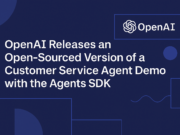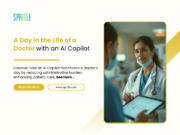USPTO’s signature event inspires with personal, practical advice for improving inventors’ intellectual property potential
While some of America’s most successful inventors and intellectual property (IP) experts gathered to share their experiences and expertise at the USPTO’s annual showcase event, Christie Thoene talked about a hunger intended to whet our appetites.
“The patent system is a pie that we can grow as big as we want,” said Qualcomm’s vice president of quality and legal communications. She later added that the $200 billion company “would not exist without the patent system.”
Thoene spoke on Day 1 of “Invention-Con 2024: Expanding Your Intellectual Property Potential,” August 16 at USPTO headquarters in Alexandria, Virginia.
The two-day event featured insights, advice, and resource help from those who have been there and done that to those who want to be there and do that. Day 1 consisted of panels followed by in-person networking opportunities. Day 2 included hands-on activities for inventors of all ages, including how to make your own wearable tech.
Day 1 featured four sets of online panels on diverse topics presented by a range of inventors and IP experts from the U.S. and abroad, including eight women (three of whom were artificial intelligence (AI) specialists).
During the panel discussion “Why IP is beneficial to innovators and companies alike,” Thoene noted the chronic underrepresentation of women and minorities in the patent ecosystem and how reversing the trend is crucial for growing that pie: “We know from our research that if more women and more people of color start patenting, we can add up to a trillion dollars to U.S. GDP. …
“Patents, copyrights and trademarks we know are about 40 percent of the U.S. economy, and that number is getting bigger all the time. So there really is the opportunity for us, if we just can find ways to bring more people into the system.”
In a dramatic example of the value of patents for everyone from corporate behemoths to small inventors, Thoene said Qualcomm generates about $6 billion a year in licensing revenue and that “a big chunk of that gets pumped back into our research and development programs and enables us to invent new things, which we hope is frankly making the world a better place.
“And we would not be able to secure that revenue if we weren’t able to get patents and enforce those patents.”
Thoene said women typically take patent rejection harder than men, a comment that elicited nods of agreement from the audience. James Howard, executive director of the Black Inventors Hall of Fame, discussed the mindset that is conducive to greater success.
His primary advice: “Be confident, and be informed.”
He shared the story of Adrienne Smith, a women’s football player with six national championships who invented a card game called Blitz Champs. She was confident enough to pursue a patent but did know what to do next.
“So, here’s where the confidence and being informed becomes important,” Howard said. “Whatever your product is, find out who’s already succeeded, and you go to that individual.”
Howard said Smith enlisted the help of three experienced entrepreneurs—one of whom was Ken Johnson, owner of the highly successful card game Phase 10. “Now she’s talking about how to get her product licensed. She’s doing it with confidence. She’s doing it with being informed.”
Unafraid of the word “failure,” Howard encourages “failing and falling forward.” And although many experts suggest enlisting the help of a patent attorney, he said, “You don’t have to run to a patent attorney first. Get your NDA [non-disclosure agreement]. Be prudent. Be guarded, but be optimistic.”
“Plug in and use the people power around you.”
The second panel discussion, “The spark of creativity,” involved much discussion about how to acquire funding. Dawn N. Myers, founder and CEO of Richualist, which specializes in tech-enabled hair care appliances, said plugging in is imperative during a time when funding for startups—especially those run by women and people of color—is almost nonexistent.
“Venture (capital) is dry. No one is funding early stage moonshots. So we have to be really creative. Again, this is an iterative process. …
“It’s going to be about putting together a suite of solutions that work for you. You’re going to have to bootstrap. You’re going to have to go to accelerators. You have to apply to grants. You’re going to have to do the innovation challenges.”
Alan Guyan, CEO and founder of Made Plus—which makes environmentally conscious footwear—sat next to Myers wearing shoes that he said were made from 6 ½ water bottles.
“The money’s out there, even in this dry segment we have,” he said. “It’s really (about) the alignment of what the investors are looking for.”
He gave the example of a four-legged stool, which requires the balance of equal components to sit right. “If you’re after (only) a check, just stop, because that’s not what you need. … You probably need some sort of guidance along the way. You probably need somebody who has some interest in what you’re doing, having the passion.”
Perhaps most important is the need for “a true vision of what you’re going to achieve five or six years from now. Because that’s what investors want to hear: They want to see how much of their money they get back, and how fast.”
“There is no shortage of good ideas. There are shortages of solutions.”
Matt Nuccio, president and creative director of toy company Design Edge, said during the panel discussion “Monetizing your IP through licensing” that often a major obstacle in getting licensing is people who get “married to their idea.”
When this happens, he said, “They tend to overdesign it, and they also tend to put crazy extensions on it.” He likened this to having 10 movie plots at once and expecting them all to be a hit.
A major challenge of licensing is to get in front of the right person, which can be daunting with no connections. Nuccio said LinkedIn works “tremendously well” for him, also suggesting trade shows.
“Don’t be forceful or overdo it, either. Don’t get greedy.”
Before entering into any licensing agreement, ensuring sufficient legal protection is imperative. Raquel Graham, chief operating officer and founder of Roq Innovation—who got a licensing deal with her first product—strongly encourages retaining a patent attorney.
She said patent law is so complex that her lawyer talks to her “like a kindergartner, and I still can’t get it.
“A good patent attorney will also help you with strategy, right? So, it’s all tied together. A good patent attorney understands the full scope and then can help you from A to B, far beyond just getting your patent.”
Nuccio reminded inventors not to overlook the value of strong trademark protection, which he said is “the biggest mistake I see.”
A trademark can be worth a thousand times more than a patent, he said—because although the product launches the brand, the brand can extend to hundreds more items.
“Go do it. Go make your idea happen.”
Jerry Ma, moderator for the last of the discussion panels, “Practical AI: Solving real-world problems,” reminded the audience that AI does not have to be an intimidating tool for entrepreneurs. Ma is director of emerging technology and chief AI officer at the USPTO.
Panelist Marianne Bekker, general partner at Progressive Ventures, provided three suggestions.
The first is to understand what AI can and cannot do. “AI can generate new data, AI can do matching, but just really understand that every single problem that it solves is different and unique.” She suggested utilizing online courses and YouTube videos to enhance understanding.
The second part is to hire the right kind of talent. “There are a lot of AI experts out there that you can reach out to to kind of just get a consultation on what is and what is not possible. And then when you start to kind of get that knowledge base within your company, then you‘re going to be much better suited to implement AI within your culture.”
Finally, “Don‘t be afraid to try it out yourself.” For example, Open AI has a tool called Custom GPT, where “you don‘t really need to understand code, but you can customize a version of chat to solve your problem.
“You can see it in data. You can play around with the model, to make it operate, like, for a use case that you know of. … That by itself will teach you a lot of the things that you need to learn to then use AI in a more professional manner.”


















![Diablo 4 Mod Apk Newest Model [Unlimited Excitement]](https://digibytetoday.com/wp-content/uploads/2025/06/1750344127_1-final-180x135.jpg)















